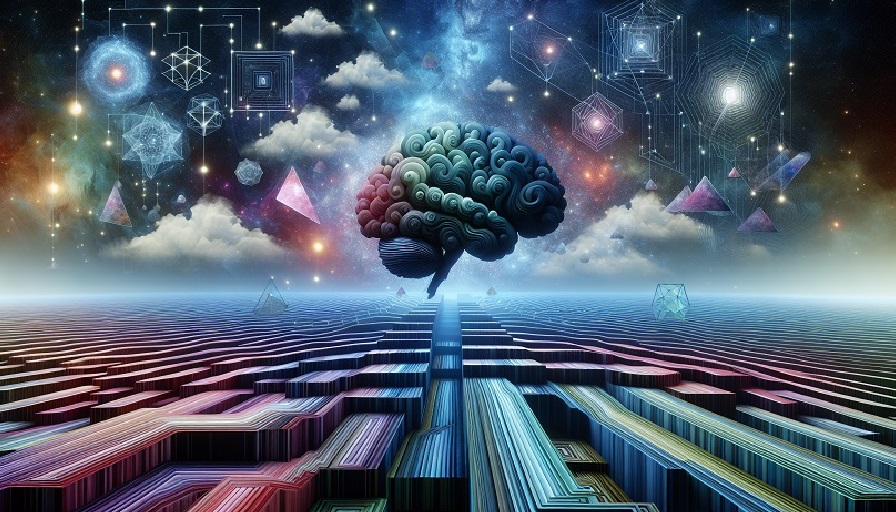
Everyone has experienced it: a sudden flash of clarity that seems to appear out of nowhere. Maybe you were stuck on a tough problem, only to have the answer pop into your mind during a shower, a walk, or even in the middle of the night. These breakthroughs, often called “Aha” moments, are more than random strokes of luck. Neuroscience reveals that they are the product of complex brain processes working behind the scenes, and understanding them can help you unlock more creativity and problem-solving power in daily life.
Contents
What Are “Aha” Moments?
An “Aha” moment is a sudden realization or solution that feels both surprising and obvious once it appears. Unlike slow, deliberate problem-solving, insights arrive all at once, often accompanied by a burst of excitement or relief. Psychologists distinguish insight-based solutions from analytical ones because they occur when the mind makes unexpected connections, often after a period of frustration or impasse.
These moments don’t just feel different – they are different in terms of brain activity. Imaging studies show distinct neural signatures associated with insight compared to step-by-step reasoning. Understanding these mechanisms helps explain why breakthroughs often arrive when we least expect them.
The Brain Science Behind Insights
Neuroscience research has identified several key players in “Aha” moments:
- Right temporal lobe: Studies using EEG scans show bursts of activity in the right anterior temporal lobe just before an insight, an area linked to pattern recognition and novel associations.
- Gamma waves: A spike in high-frequency gamma brainwaves occurs during insights, suggesting that multiple neural networks suddenly synchronize to produce clarity.
- Dopamine release: Insights are often accompanied by a rewarding “feel-good” sensation, believed to result from dopamine release that reinforces the value of the discovery.
- Default mode network (DMN): This network, active during rest and daydreaming, helps incubate insights by allowing the brain to wander and form hidden connections.
Together, these elements create the conditions for the sudden leap from confusion to clarity that defines an “Aha” moment.
Why Insights Happen During Downtime
One of the most fascinating aspects of insight is that it often occurs when we step away from focused effort. Struggling with a problem intensely activates the brain’s analytical networks, but this can also create mental blocks. When you take a break, the diffuse mode of thinking takes over, allowing subconscious processes to reorganize the information in new ways.
This explains why so many insights arrive in the shower, during a walk, or while drifting off to sleep. These moments of relaxation reduce mental noise, giving the brain space to connect distant ideas. It’s a reminder that rest is not wasted time but an active ingredient in creative thinking.
Factors That Support “Aha” Moments
While no one can force a breakthrough, certain conditions make them more likely:
- Incubation time: Allowing problems to “simmer” instead of forcing solutions gives the brain time to form new connections.
- Positive mood: Research shows that people in a good mood are more likely to experience insights, possibly due to greater cognitive flexibility.
- Novel experiences: Exposure to new environments, cultures, or information increases the brain’s pool of associations, fueling creativity.
- Reduced stress: Chronic stress narrows focus and hinders insight, while relaxation widens attention and fosters breakthroughs.
- Sleep: During sleep, the brain consolidates memories and reorganizes knowledge, which often leads to waking up with solutions.
By cultivating these factors, individuals can create fertile ground for sudden insights to emerge.
Nootropics and Mental Clarity
In addition to lifestyle strategies, some people turn to nootropics – also known as brain supplements – to support the mental clarity needed for insight. Compounds such as omega-3 fatty acids help maintain healthy brain cell communication, while adaptogens like Rhodiola rosea may reduce stress that interferes with creativity. L-theanine paired with caffeine is often used to promote calm alertness, a state conducive to both logical reasoning and open-ended problem-solving.
While supplements are not magic keys to instant breakthroughs, they may enhance the brain’s overall performance, making it easier to reach the relaxed yet alert states that foster “Aha” moments. When combined with rest, variety, and positive mood, they can be part of a broader toolkit for cultivating creativity.
Practical Ways to Encourage Breakthroughs
If you want to boost the likelihood of experiencing “Aha” moments, try these practical strategies:
- Alternate between focused work and relaxed downtime.
- Engage in activities like walking, showering, or light exercise to refresh your mind.
- Keep a notebook handy – insights often arrive unexpectedly.
- Seek out new experiences and perspectives to broaden your pool of associations.
- Prioritize sleep to give your brain time to reorganize information.
These practices won’t guarantee breakthroughs, but they stack the odds in your favor by aligning with how the brain naturally processes problems.
“Aha” moments may feel mysterious, but neuroscience reveals them as the product of intricate brain processes involving pattern recognition, rest, and sudden synchronization across networks. By understanding these mechanisms, you can create conditions that encourage insights, from taking breaks and reducing stress to exploring new experiences. Nootropics may also play a supportive role in maintaining mental clarity and resilience. Ultimately, insights are not accidents – they are the brain’s reward for giving problems both effort and space to breathe.

